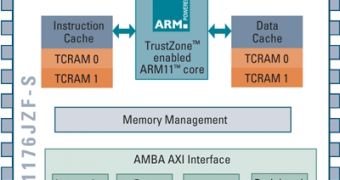The folks at touchArcade have put together this interesting article comparing the iPhone's gaming capabilities with those of dedicated gaming devices, such as Sony's PlayStation Portable and Nintendo's DS.
By the looks of it, the iPhone clearly has some advantages. Of course, it all comes down to what customers want: a real gaming console, or just a really smart phone with fair gaming capabilities as well. Maybe the information below will help you decide.
"Two components are of particular importance in quantifying such a device's ability to function as a game platform: the processor core and the graphics hardware," the publication says. "The Samsung chipset at the heart of the iPhone utilizes a 32-bit RISC ARM processing core, the ARM1176JZ(F)-S. The ARM device is capable of running at 620MHz, but Apple has downclocked it to 412MHz, presumably in the interest of extending battery life." This isn't the first time that Apple adjusts the clockspeed of the iPhone's processor and system bus.
Here's a comparison between the capabilities the PSP, DS and iPhone boast, as gaming machines, according to touchArcade:
Sony PSP - Processor: MIPS CPU @ 222 or 333MHz (selectable) - Screen: 480?272 pixels - Input: D-pad, analog stick Nintendo DS - Processor: two ARM CPUs (67MHz and 33MHz) - Screen: two 256?192 pixel screens - Input: D-pad, touch-screen iPhone - Processor: ARM CPU @ 412MHz - Screen: 480?320 pixels - Input: multitouch, accelerometer
Other notable features of the iPhone's processor alone include an 8-stage integer pipeline that delivers high clock frequency, separate load-store and arithmetic pipelines, Branch Prediction and Return Stack, and Up to 675 Dhrystone 2.1 MIPS in 0.13u process. The iPhone's processor also utilizes a high performance memory system that supports 4-64k cache sizes, optional tightly coupled memories with DMA for multi-media applications, quad-ported AMBA 3 AXI bus interface speeds instruction and data access, and ARMv6 memory system architecture, which accelerates OS context-switch. A Vector Floating Point coprocessor allows for powerful acceleration of embedded 3D-graphics.
These notable features clearly give iPhone an advantage, as far as graphically rich games go, but also for casual titles that make good use of accelerometer and touch-screen input. The App Store is something neither Sony's PSP nor Nintendo's DS have, so adding the ability to download your games on the go (some for free) counts as a plus as well. So, yeah, the iPhone does sound like a good choice if you're not a hardcore handheld gamer.

 14 DAY TRIAL //
14 DAY TRIAL //